-
Executive Summary
-
Market Introduction
-
Definition 16
-
Scope Of The Study 16
-
List Of Assumptions 17
-
Market Structure 17
-
Macro Factor Indicators Analysis 18
-
Research Methodology
-
Research Process 20
-
Primary Research 21
-
Secondary Research 22
-
Market Size Estimation 22
-
Forecast Model 23
-
Market Dynamics
-
Introduction 25
-
Drivers 25
- Government Initiatives And Stringent Emission Regulations 25
- Increasing Crude Oil Prices 26
- Increasing Popularity Of E-Bikes Among Tourists 26
- Drivers Impact Analysis 27
-
Restraints 28
- High Prices Of E-Bikes And Their Batteries 28
- Underdeveloped Charging And Aftermarket Service Infrastructure 28
- Restraints Impact Analysis 28
-
Opportunity 29
- Government Initiatives For The Construction Of Cycle Lanes 29
-
Challenge 29
- Limited Battery Capacity And Longer Charging Duration 29
-
Market Factor Analysis
-
Supply Chain Analysis 31
- Design And Development 31
- Raw Material Supply 31
- Bicycle Manufacturing 31
- Supply And Distribution 31
- End Use 31
-
Porter’s Five Forces Model 32
- Threat Of New Entrants 32
- Bargaining Power Of Suppliers 32
- Bargaining Power Of Buyers 32
- Threat Of Substitutes 33
- Intensity Of Rivalry 33
-
Import Analysis Of Bicycles (Bicycles And Other Cycles, Not Motorised) 34
-
Export Analysis Of Bicycles (Bicycles And Other Cycles, Not Motorised) 35
-
Manufacturing & Labor Cost Structure Analysis Of Bicycle 36
-
Upstream Raw Material Suppliers Of Bicycle Analysis 37
-
Marketing Channel Analysis
-
Marketing Channel Of Bicycle 40
-
Global Bicycle Market, By Type
-
Overview 42
- E-Bikes 42
- Conventional Bikes 42
-
Global Bicycle Market, By Application
-
Overview 45
- Racing 45
- Recreation 45
- Transportation Tools 45
-
Global Bicycle Market, By Region
-
Overview 48
-
North America 50
- US 53
- Canada 55
-
Europe 58
- Germany 62
- UK 64
- France 66
- Italy 69
- Rest Of Europe 71
-
Asia-Pacific 73
- China 77
- Japan 80
- India 82
- Rest Of Asia-Pacific 84
-
Rest Of The World 87
- Latin America 90
- Middle East & Africa 93
-
Competitive Landscape
-
Competitive Scenario 97
-
Market Share Analysis 97
-
Company Profile
-
Giant Bicycles 99
- Products/Services Offered 100
- Financial Overview 100
- SWOT Analysis 101
- Strategies 101
-
Cannondale 102
- Products/Services Offered 103
- Financial Overview 110
- SWOT Analysis 111
- Key Strategies 111
-
Derby Cycle 112
- Products/Services Offered 113
- Financial Overview 114
- SWOT Analysis 114
- Key Strategies 114
-
Accell Group 115
- Products/Services Offered 115
- Financial Overview 116
- SWOT Analysis 116
- Strategies 116
-
Tube Investments Of India Limited 117
- Products/Services Offered 118
- Financial Overview 122
- SWOT Analysis 122
- Strategies 122
-
Merida 123
- Products/Services Offered 124
- Financial Overview 129
-
F.I.V. E. Bianchi SpA 130
- Products/Services Offered 131
- Financial Overview 133
-
Easy Motion USA 134
- Products/Services Offered 135
- Financial Overview 136
-
Moustache Bikes 137
- Products/Services Offered 138
- Financial Overview 139
-
Trek Bicycle Corporation 140
- Products/Services Offered 141
- Financial Overview 143
-
Specialized Bicycle Components 144
- Products/Services Offered 145
- Financial Overview 148
-
Avon Cycles 149
- Products/Services Offered 150
- Financial Overview 152
-
Hero Cycles Limited 153
- Products/Services Offered 154
- Financial Overview 158
-
Tianjin Fuji-Ta Group Co., Ltd 159
- Products/Services Offered 160
- Financial Overview 161
-
NYCeWheels Inc. 162
- Products/Services Offered 163
- Financial Overview 165
-
List Of Tables
-
MARKET SYNOPSIS 14
-
LIST OF ASSUMPTIONS 17
-
MACRO INDICATORS INFLUENCING THE GLOBAL BICYCLE MARKET FOR TOP FIVE COUNTRIES 18
-
IMPORT ANALYSIS OF BICYCLES, 2024-2030 (UNITS) 34
-
EXPORT ANALYSIS OF BICYCLES, 2024-2030 (UNITS) 35
-
PROPORTION OF MANUFACTURING COST STRUCTURE 36
-
LABOR COST ANALYSIS 36
-
UPSTREAM RAW MATERIAL SUPPLIERS OF BICYCLE WITH CONTACT INFORMATION 37
-
GLOBAL BICYCLE BY TYPES, BY VOLUME, 2024-2030 (MILLION UNITS) 42
-
GLOBAL BICYCLE BY TYPES, BY VOLUME, 2024-2030 (MILLION UNITS) 42
-
GLOBAL BICYCLE MARKET, BY TYPE, BY VALUE, 2024-2030 (USD MILLION) 43
-
GLOBAL BICYCLE MARKET, BY TYPE, BY VALUE, 2024-2030 (USD MILLION) 43
-
GLOBAL BICYCLE MARKET, BY APPLICATION, BY VOLUME, 2024-2030 (MILLION UNITS) 45
-
GLOBAL BICYCLE BY TYPES, BY VOLUME, 2024-2030 (MILLION UNITS) 46
-
GLOBAL BICYCLE MARKET, BY TYPE, BY VALUE, 2024-2030 (USD MILLION) 46
-
GLOBAL BICYCLE MARKET, BY TYPE, BY VALUE, 2024-2030 (USD MILLION) 46
-
GLOBAL BICYCLE MARKET, BY REGION, BY VOLUME, 2024-2030 (MILLION UNITS) 48
-
GLOBAL BICYCLE BY TYPES, BY VOLUME, 2024-2030 (MILLION UNITS) 48
-
GLOBAL BICYCLE MARKET, BY REGION, BY VALUE, 2024-2030 (USD MILLION) 49
-
GLOBAL BICYCLE MARKET, BY TYPE, BY VALUE, 2024-2030 (USD MILLION) 49
-
NORTH AMERICA: BICYCLE MARKET, BY COUNTRY, BY VOLUME, 2024-2030 (MILLION UNITS) 50
-
NORTH AMERICA: BICYCLE MARKET, BY COUNTRY, BY VOLUME, 2024-2030 (MILLION UNITS) 50
-
NORTH AMERICA: BICYCLE MARKET, BY COUNTRY, BY VALUE, 2024-2030 (USD MILLION) 51
-
NORTH AMERICA: BICYCLE MARKET, BY COUNTRY, BY VALUE, 2024-2030 (USD MILLION) 51
-
NORTH AMERICA: BICYCLE MARKET, BY TYPE, BY VOLUME, 2024-2030 (MILLION UNITS) 51
-
NORTH AMERICA: BICYCLE MARKET, BY TYPE, BY VOLUME, 2024-2030 (MILLION UNITS) 51
-
NORTH AMERICA: BICYCLE MARKET, BY TYPE, BY VALUE, 2024-2030 (USD MILLION) 52
-
NORTH AMERICA: BICYCLE MARKET, BY TYPE, BY VALUE, 2024-2030 (USD MILLION) 52
-
NORTH AMERICA: BICYCLE MARKET, BY APPLICATION, BY VOLUME, 2024-2030 (MILLION UNITS) 52
-
NORTH AMERICA: BICYCLE MARKET, BY APPLICATION, BY VOLUME, 2024-2030 (MILLION UNITS) 52
-
NORTH AMERICA: BICYCLE MARKET, BY APPLICATION, BY VALUE, 2024-2030 (USD MILLION) 53
-
NORTH AMERICA: BICYCLE MARKET, BY APPLICATION, BY VALUE, 2024-2030 (USD MILLION) 53
-
US: BICYCLE MARKET, BY TYPE, BY VOLUME, 2024-2030 (MILLION UNITS) 53
-
NORTH AMERICA: BICYCLE MARKET, BY TYPE, BY VOLUME, 2024-2030 (MILLION UNITS) 54
-
US: BICYCLE MARKET, BY TYPE, BY VALUE, 2024-2030 (USD MILLION) 54
-
US: BICYCLE MARKET, BY TYPE, BY VALUE, 2024-2030 (USD MILLION) 54
-
US: BICYCLE MARKET, BY APPLICATION, BY VOLUME, 2024-2030 (MILLION UNITS) 54
-
US: BICYCLE MARKET, BY APPLICATION, BY VOLUME, 2024-2030 (MILLION UNITS) 55
-
US: BICYCLE MARKET, BY APPLICATION, BY VALUE, 2024-2030 (USD MILLION) 55
-
US: BICYCLE MARKET, BY COUNTRY, BY VALUE 2024-2030 (USD MILLION) 55
-
CANADA: BICYCLE MARKET, BY TYPE, BY VOLUME, 2024-2030 (MILLION UNITS) 56
-
NORTH AMERICA: BICYCLE MARKET, BY TYPE, BY VOLUME, 2024-2030 (MILLION UNITS) 56
-
CANADA: BICYCLE MARKET, BY TYPE, BY VALUE, 2024-2030 (USD MILLION) 56
-
CANADA: BICYCLE MARKET, BY TYPE, BY VALUE, 2024-2030 (USD MILLION) 56
-
CANADA: BICYCLE MARKET, BY APPLICATION, BY VOLUME, 2024-2030 (MILLION UNITS) 57
-
CANADA: BICYCLE MARKET, BY APPLICATION, BY VOLUME, 2024-2030 (MILLION UNITS) 57
-
CANADA: BICYCLE MARKET, BY APPLICATION, BY VALUE, 2024-2030 (USD MILLION) 57
-
CANADA: BICYCLE MARKET, BY COUNTRY, BY VALUE 2024-2030 (USD MILLION) 57
-
EUROPE: BICYCLE MARKET, BY COUNTRY, BY VOLUME, 2024-2030 (MILLION UNITS) 58
-
EUROPE: BICYCLE MARKET, BY COUNTRY, BY VOLUME, 2024-2030 (MILLION UNITS) 59
-
EUROPE: BICYCLE MARKET, BY COUNTRY, BY VALUE, 2024-2030 (USD MILLION) 59
-
EUROPE: BICYCLE MARKET, BY COUNTRY, BY VALUE, 2024-2030 (USD MILLION) 59
-
EUROPE: BICYCLE MARKET, BY TYPE, BY VOLUME, 2024-2030 (MILLION UNITS) 60
-
EUROPE: BICYCLE MARKET, BY TYPE, BY VOLUME, 2024-2030 (MILLION UNITS) 60
-
EUROPE: BICYCLE MARKET, BY TYPE, BY VALUE, 2024-2030 (USD MILLION) 60
-
EUROPE: BICYCLE MARKET, BY TYPE, 2024-2030 (USD MILLION) 60
-
EUROPE: BICYCLE MARKET, BY APPLICATION, BY VOLUME, 2024-2030 (MILLION UNITS) 61
-
EUROPE: BICYCLE MARKET, BY APPLICATION, BY VOLUME, 2024-2030 (MILLION UNITS) 61
-
EUROPE: BICYCLE MARKET, BY APPLICATION, BY VALUE, 2024-2030 (USD MILLION) 61
-
EUROPE: BICYCLE MARKET, BY APPLICATION, BY VALUE, 2024-2030 (USD MILLION) 61
-
GERMANY: BICYCLE MARKET, BY TYPE, BY VOLUME, 2024-2030 (MILLION UNITS) 62
-
GERMANY: BICYCLE MARKET, BY TYPE, BY VOLUME, 2024-2030 (MILLION UNITS) 62
-
GERMANY: BICYCLE MARKET, BY TYPE, BY VALUE, 2024-2030 (USD MILLION) 62
-
GERMANY: BICYCLE MARKET, BY TYPE, BY VALUE, 2024-2030 (USD MILLION) 63
-
GERMANY: BICYCLE MARKET, BY APPLICATION, BY VOLUME, 2024-2030 (MILLION UNITS) 63
-
GERMANY: BICYCLE MARKET, BY APPLICATION, BY VOLUME, 2024-2030 (MILLION UNITS) 63
-
GERMANY: BICYCLE MARKET, BY APPLICATION, BY VALUE, 2024-2030 (USD MILLION) 63
-
GERMANY: BICYCLE MARKET, BY COUNTRY, BY VALUE 2024-2030 (USD MILLION) 64
-
UK: BICYCLE MARKET, BY TYPE, BY VOLUME, 2024-2030 (MILLION UNITS) 64
-
UK: BICYCLE MARKET, BY TYPE, BY VALUE, 2024-2030 (USD MILLION) 65
-
UK: BICYCLE MARKET, BY TYPE, BY VALUE, 2024-2030 (USD MILLION) 65
-
UK: BICYCLE MARKET, BY APPLICATION, BY VOLUME, 2024-2030 (MILLION UNITS) 65
-
UK: BICYCLE MARKET, BY APPLICATION, BY VOLUME, 2024-2030 (MILLION UNITS) 65
-
UK: BICYCLE MARKET, BY APPLICATION, BY VALUE, 2024-2030 (USD MILLION) 66
-
UK: BICYCLE MARKET, BY COUNTRY, BY VALUE 2024-2030 (USD MILLION) 66
-
FRANCE: BICYCLE MARKET, BY TYPE, BY VOLUME, 2024-2030 (MILLION UNITS) 66
-
FRANCE: BICYCLE MARKET, BY TYPE, BY VOLUME, 2024-2030 (MILLION UNITS) 67
-
FRANCE: BICYCLE MARKET, BY TYPE, BY VALUE, 2024-2030 (USD MILLION) 67
-
FRANCE: BICYCLE MARKET, BY TYPE, BY VALUE, 2024-2030 (USD MILLION) 67
-
FRANCE: BICYCLE MARKET, BY APPLICATION, BY VOLUME, 2024-2030 (MILLION UNITS) 67
-
FRANCE: BICYCLE MARKET, BY APPLICATION, BY VOLUME, 2024-2030 (MILLION UNITS) 68
-
FRANCE: BICYCLE MARKET, BY APPLICATION, BY VALUE, 2024-2030 (USD MILLION) 68
-
FRANCE: BICYCLE MARKET, BY APPLICATION, BY VALUE 2024-2030 (USD MILLION) 68
-
ITALY: BICYCLE MARKET, BY TYPE, BY VOLUME, 2024-2030 (MILLION UNITS) 69
-
ITALY: BICYCLE MARKET, BY TYPE, BY VOLUME, 2024-2030 (MILLION UNITS) 69
-
ITALY: BICYCLE MARKET, BY TYPE, BY VALUE, 2024-2030 (USD MILLION) 69
-
ITALY: BICYCLE MARKET, BY TYPE, BY VALUE, 2024-2030 (USD MILLION) 70
-
ITALY: BICYCLE MARKET, BY APPLICATION, BY VOLUME, 2024-2030 (MILLION UNITS) 70
-
ITALY: BICYCLE MARKET, BY APPLICATION, BY VOLUME, 2024-2030 (MILLION UNITS) 70
-
ITALY: BICYCLE MARKET, BY APPLICATION, BY VALUE, 2024-2030 (USD MILLION) 70
-
ITALY: BICYCLE MARKET, BY APPLICATION, BY VALUE 2024-2030 (USD MILLION) 71
-
REST OF EUROPE: BICYCLE MARKET, BY TYPE, BY VOLUME, 2024-2030 (MILLION UNITS) 71
-
REST OF EUROPE: BICYCLE MARKET, BY TYPE, BY VOLUME, 2024-2030 (MILLION UNITS) 71
-
REST OF EUROPE: BICYCLE MARKET, BY TYPE, BY VALUE, 2024-2030 (USD MILLION) 72
-
REST OF EUROPE: BICYCLE MARKET, BY TYPE, BY VALUE, 2024-2030 (USD MILLION) 72
-
REST OF EUROPE: BICYCLE MARKET, BY APPLICATION, BY VOLUME, 2024-2030 (MILLION UNITS) 72
-
REST OF EUROPE: BICYCLE MARKET, BY APPLICATION, BY VOLUME, 2024-2030 (MILLION UNITS) 72
-
REST OF EUROPE: BICYCLE MARKET, BY APPLICATION, BY VALUE, 2024-2030 (USD MILLION) 73
-
REST OF EUROPE: BICYCLE MARKET, BY APPLICATION, BY VALUE, 2024-2030 (USD MILLION) 73
-
ASIA-PACIFIC: BICYCLE MARKET, BY COUNTRY, BY VOLUME, 2024-2030 (MILLION UNITS) 74
-
ASIA-PACIFIC: BICYCLE MARKET, BY COUNTRY, BY VOLUME, 2024-2030 (MILLION UNITS) 74
-
ASIA-PACIFIC: BICYCLE MARKET, BY COUNTRY, BY VALUE, 2024-2030 (USD MILLION) 75
-
ASIA-PACIFIC: BICYCLE MARKET, BY COUNTRY, BY VALUE, 2024-2030 (USD MILLION) 75
-
ASIA-PACIFIC: BICYCLE MARKET, BY TYPE, BY VOLUME, 2024-2030 (MILLION UNITS) 75
-
ASIA-PACIFIC: BICYCLE MARKET, BY TYPE, BY VOLUME, 2024-2030 (MILLION UNITS) 75
-
ASIA-PACIFIC: BICYCLE MARKET, BY TYPE, BY VALUE, 2024-2030 (USD MILLION) 76
-
ASIA-PACIFIC: BICYCLE MARKET, BY TYPE, 2024-2030 (USD MILLION) 76
-
ASIA-PACIFIC: BICYCLE MARKET, BY APPLICATION, BY VOLUME, 2024-2030 (MILLION UNITS) 76
-
ASIA-PACIFIC: BICYCLE MARKET, BY APPLICATION, BY VOLUME, 2024-2030 (MILLION UNITS) 76
-
ASIA-PACIFIC: BICYCLE MARKET, BY APPLICATION, BY VALUE, 2024-2030 (USD MILLION) 77
-
ASIA-PACIFIC: BICYCLE MARKET, BY APPLICATION, 2024-2030 (USD MILLION) 77
-
CHINA: BICYCLE MARKET, BY TYPE, BY VOLUME, 2024-2030 (MILLION UNITS) 77
-
CHINA: BICYCLE MARKET, BY TYPE, BY VOLUME, 2024-2030 (MILLION UNITS) 78
-
CHINA: BICYCLE MARKET, BY TYPE, BY VALUE, 2024-2030 (USD MILLION) 78
-
CHINA: BICYCLE MARKET, BY TYPE, BY VALUE, 2024-2030 (USD MILLION) 78
-
CHINA: BICYCLE MARKET, BY APPLICATION, BY VOLUME, 2024-2030 (MILLION UNITS) 78
-
CHINA: BICYCLE MARKET, BY APPLICATION, BY VOLUME, 2024-2030 (MILLION UNITS) 79
-
CHINA: BICYCLE MARKET, BY APPLICATION, BY VALUE, 2024-2030 (USD MILLION) 79
-
CHINA: BICYCLE MARKET, BY COUNTRY, BY VALUE 2024-2030 (USD MILLION) 79
-
JAPAN: BICYCLE MARKET, BY TYPE, BY VOLUME, 2024-2030 (MILLION UNITS) 80
-
JAPAN: BICYCLE MARKET, BY TYPE, BY VOLUME, 2024-2030 (MILLION UNITS) 80
-
JAPAN: BICYCLE MARKET, BY TYPE, BY VALUE, 2024-2030 (USD MILLION) 80
-
JAPAN: BICYCLE MARKET, BY TYPE, BY VALUE, 2024-2030 (USD MILLION) 81
-
JAPAN: BICYCLE MARKET, BY APPLICATION, BY VOLUME, 2024-2030 (MILLION UNITS) 81
-
JAPAN: BICYCLE MARKET, BY APPLICATION, BY VOLUME, 2024-2030 (MILLION UNITS) 81
-
JAPAN: BICYCLE MARKET, BY APPLICATION, BY VALUE, 2024-2030 (USD MILLION) 81
-
JAPAN: BICYCLE MARKET, BY APPLICATION, BY VALUE 2024-2030 (USD MILLION) 82
-
INDIA: BICYCLE MARKET, BY TYPE, BY VOLUME, 2024-2030 (MILLION UNITS) 82
-
INDIA: BICYCLE MARKET, BY TYPE, BY VOLUME, 2024-2030 (MILLION UNITS) 82
-
INDIA: BICYCLE MARKET, BY TYPE, BY VALUE, 2024-2030 (USD MILLION) 83
-
INDIA: BICYCLE MARKET, BY TYPE, BY VALUE, 2024-2030 (USD MILLION) 83
-
INDIA: BICYCLE MARKET, BY APPLICATION, BY VOLUME, 2024-2030 (MILLION UNITS) 83
-
INDIA: BICYCLE MARKET, BY APPLICATION, BY VOLUME, 2024-2030 (MILLION UNITS) 83
-
INDIA: BICYCLE MARKET, BY APPLICATION, BY VALUE, 2024-2030 (USD MILLION) 84
-
INDIA: BICYCLE MARKET, BY APPLICATION, BY VALUE 2024-2030 (USD MILLION) 84
-
REST OF ASIA-PACIFIC: BICYCLE MARKET, BY TYPE, BY VOLUME, 2024-2030 (MILLION UNITS) 84
-
REST OFASIA-PACIFIC: BICYCLE MARKET, BY TYPE, BY VOLUME, 2024-2030 (MILLION UNITS) 85
-
REST OF ASIA-PACIFIC: BICYCLE MARKET, BY TYPE, BY VALUE, 2024-2030 (USD MILLION) 85
-
REST OF ASIA-PACIFIC: BICYCLE MARKET, BY TYPE, BY VALUE, 2024-2030 (USD MILLION) 85
-
REST OF ASIA-PACIFIC: BICYCLE MARKET, BY APPLICATION, BY VOLUME, 2024-2030 (MILLION UNITS) 85
-
REST OF ASIA-PACIFIC: BICYCLE MARKET, BY APPLICATION, BY VOLUME, 2024-2030 (MILLION UNITS) 86
-
REST OF PACIFIC: BICYCLE MARKET, BY APPLICATION, BY VALUE, 2024-2030 (USD MILLION) 86
-
REST OF ASIA-PACIFIC: BICYCLE MARKET, BY APPLICATION, BY VALUE 2024-2030 (USD MILLION) 86
-
REST OF THE WORLD: BICYCLE MARKET, BY COUNTRY, BY VOLUME, 2024-2030 (MILLION UNITS) 87
-
ASIA-PACIFIC: BICYCLE MARKET, BY COUNTRY, BY VOLUME, 2024-2030 (MILLION UNITS) 87
-
REST OF THE WORLD: BICYCLE MARKET, BY COUNTRY, BY VALUE, 2024-2030 (USD MILLION) 88
-
REST OF THE WORLD: BICYCLE MARKET, BY COUNTRY, BY VALUE, 2024-2030 (USD MILLION) 88
-
REST OF THE WORLD: BICYCLE MARKET, BY TYPE, BY VOLUME, 2024-2030 (MILLION UNITS) 88
-
REST OF THE WORLD: BICYCLE MARKET, BY TYPE, BY VOLUME, 2024-2030 (MILLION UNITS) 88
-
REST OF THE WORLD: BICYCLE MARKET, BY TYPE, BY VALUE, 2024-2030 (USD MILLION) 89
-
REST OF THE WORLD: BICYCLE MARKET, BY TYPE, 2024-2030 (USD MILLION) 89
-
REST OF THE WORLD: BICYCLE MARKET, BY APPLICATION, BY VOLUME, 2024-2030 (MILLION UNITS) 89
-
REST OF THE WORLD: BICYCLE MARKET, BY APPLICATION, BY VOLUME, 2024-2030 (MILLION UNITS) 90
-
REST OF THE WORLD: BICYCLE MARKET, BY APPLICATION, BY VALUE, 2024-2030 (USD MILLION) 90
-
REST OF THE WORLD: BICYCLE MARKET, BY APPLICATION, 2024-2030 (USD MILLION) 90
-
LATIN AMERICA: BICYCLE MARKET, BY TYPE, BY VOLUME, 2024-2030 (MILLION UNITS) 91
-
LATIN AMERICA: BICYCLE MARKET, BY TYPE, BY VOLUME, 2024-2030 (MILLION UNITS) 91
-
LATIN AMERICA: BICYCLE MARKET, BY TYPE, BY VALUE, 2024-2030 (USD MILLION) 91
-
LATIN AMERICA: BICYCLE MARKET, BY TYPE, BY VALUE, 2024-2030 (USD MILLION) 91
-
LATIN AMERICA: BICYCLE MARKET, BY APPLICATION, BY VOLUME, 2024-2030 (MILLION UNITS) 92
-
LATIN AMERICA: BICYCLE MARKET, BY APPLICATION, BY VOLUME, 2024-2030 (MILLION UNITS) 92
-
LATIN AMERICA: BICYCLE MARKET, BY APPLICATION, BY VALUE, 2024-2030 (USD MILLION) 92
-
LATIN AMERICA: BICYCLE MARKET, BY COUNTRY, BY VALUE 2024-2030 (USD MILLION) 92
-
MIDDLE EAST & AFRICA: BICYCLE MARKET, BY TYPE, BY VOLUME, 2024-2030 (MILLION UNITS) 93
-
MIDDLE EAST& AFRICA: BICYCLE MARKET, BY TYPE, BY VOLUME, 2024-2030 (MILLION UNITS) 93
-
MIDDLE EAST & AFRICA: BICYCLE MARKET, BY TYPE, BY VALUE, 2024-2030 (USD MILLION) 93
-
MIDDLE EAST & AFRICA: BICYCLE MARKET, BY TYPE, BY VALUE, 2024-2030 (USD MILLION) 94
-
MIDDLE EAST & AFRICA: BICYCLE MARKET, BY APPLICATION, BY VOLUME, 2024-2030 (MILLION UNITS) 94
-
MIDDLE EAST & AFRICA: BICYCLE MARKET, BY APPLICATION, BY VOLUME, 2024-2030 (MILLION UNITS) 94
-
MIDDLE EAST & AFRICA: BICYCLE MARKET, BY APPLICATION, BY VALUE, 2024-2030 (USD MILLION) 94
-
MIDDLE EAST & AFRICA: BICYCLE MARKET, BY APPLICATION, BY VALUE 2024-2030 (USD MILLION) 95
-
-
List Of Figures
-
GLOBAL BICYCLE MARKET: MARKET STRUCTURE 17
-
RESEARCH PROCESS OF MRFR 20
-
TOP-DOWN & BOTTOM-UP APPROACHES 23
-
DROC ANALYSIS OF GLOBAL BICYCLE MARKET 25
-
INTERNATIONAL TOURIST ARRIVALS, 2024 VS 2030 (MILLION) 26
-
DRIVERS IMPACT ANALYSIS: GLOBAL BICYCLE MARKET 27
-
RESTRAINTS IMPACT ANALYSIS: GLOBAL BICYCLE MARKET 28
-
SUPPLY CHAIN: GLOBAL BICYCLE MARKET 31
-
PORTER’S FIVE FORCES MODEL: GLOBAL BICYCLE MARKET 32
-
MARKETING CHANNEL OF BICYCLE 40
-
GLOBAL BICYCLE MARKET, BY TYPE, 2024 (% SHARE) 42
-
GLOBAL BICYCLE MARKET, BY APPLICATION, 2024 (% SHARE) 45
-
GLOBAL BICYCLE MARKET SHARE, BY REGION, 2024 (% SHARE) 48
-
NORTH AMERICA: BICYCLE MARKET SHARE, BY COUNTRY, 2024 (% SHARE) 50
-
EUROPE: BICYCLE MARKET SHARE, BY COUNTRY, 2024 (% SHARE) 58
-
ASIA-PACIFIC: BICYCLE MARKET SHARE, BY COUNTRY, 2024 (% SHARE) 74
-
REST OF THE WORLD: BICYCLE MARKET SHARE, BY REGION, 2024 (% SHARE) 87
-
GLOBAL BICYCLE MARKET SHARE, 2024 (%) 97
-
"

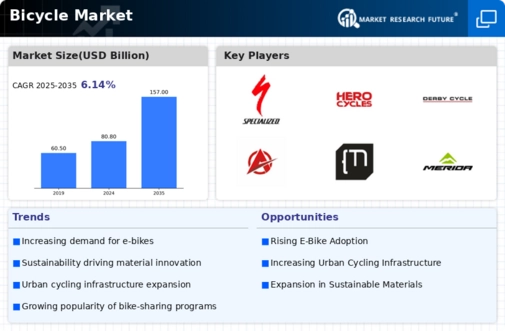

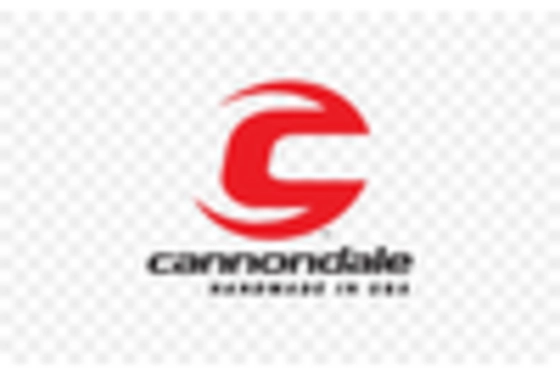
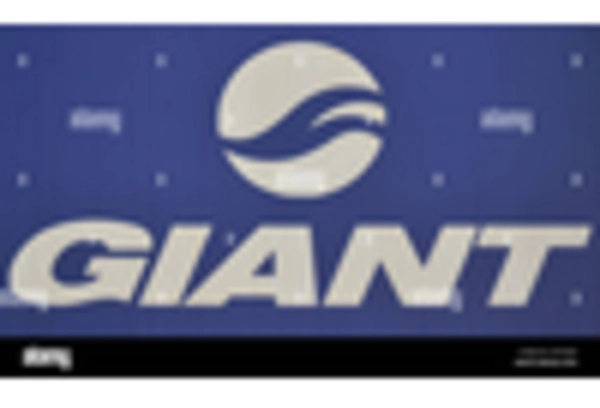
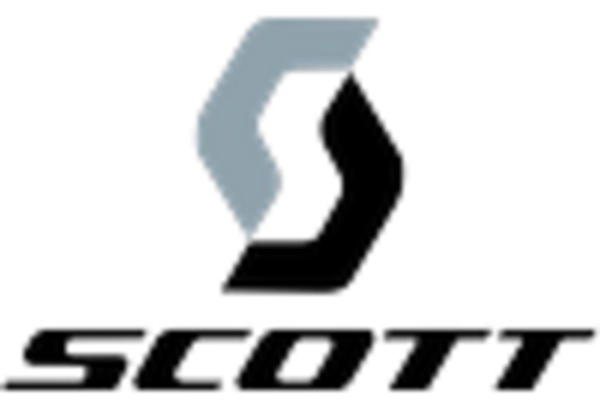

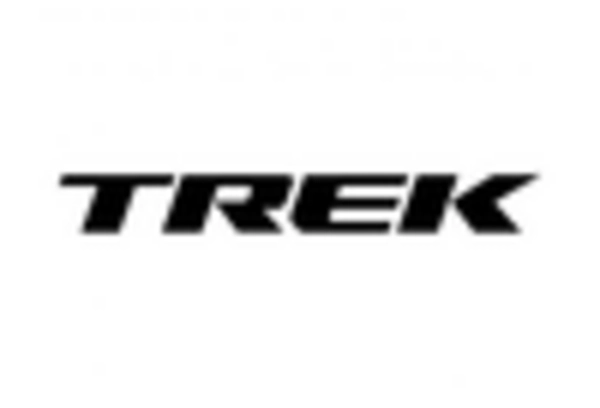

Leave a Comment